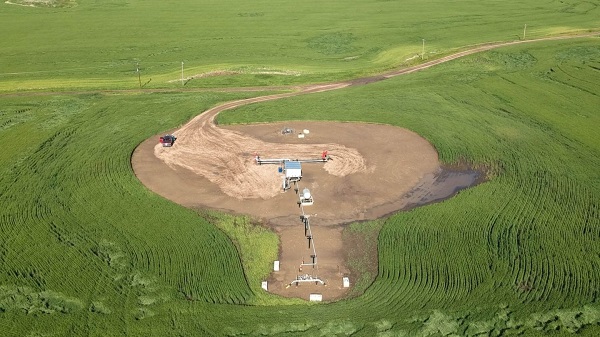Economy
“Ownership is Reconciliation” Indigenous Resource Network rebrands to emphasize shift in focus
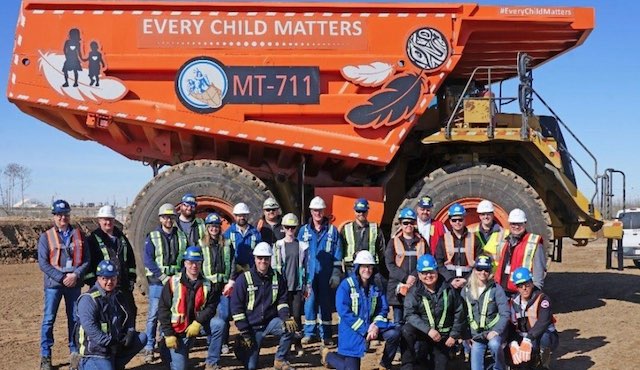
News release submitted by the Indigenous Resource Network
Indigenous Resource Network Launches Ownership is Reconciliation
The Indigenous Resource Network (IRN) is proud to unveil its latest “Ownership is Reconciliation” Campaign, marking a transformative shift in focus and rebrand from its original “Ownership Changes Everything” campaign.
This new initiative aims to convey the compelling story of Indigenous ownership in resource projects, resonating with a diverse audience including social media, supporters, and fellow Indigenous organizations. “We initiated the ‘Ownership Changes Everything’ campaign to showcase the positive impact of Indigenous ownership in resource projects. The response has been overwhelming, with strong resonance among policy makers, industry, and Indigenous communities” shared John Desjarlais, Executive Director of IRN.
Central to the campaign’s mission is enlightening Canadians about the pivotal role Indigenous ownership plays in advancing the path to reconciliation. As part of this campaign, IRN advocates for the formation of a National Indigenous Guaranteed Loan program, empowering Indigenous communities with crucial access to capital required for equitable participation in major projects nationwide. Desjarlais elaborated, stating, “While it may not be a cure for all of the issues we see in our communities, it is an essential step in revitalizing funding opportunities for Indigenous development. We are heartened by the industry’s resounding support for a national program, as it de-risks projects and facilitates the vital capital Indigenous communities need to pursue ownership.”
IRN invites all stakeholders, Indigenous and non-Indigenous alike, to join forces in promoting a future where reconciliation and resource development harmoniously converge, generating sustainable employment opportunities and fostering shared prosperity for all.
Most Indigenous people support resource development: poll
In the polarized “environment versus economy” debate we’re having, there’s often an assumption, or an assertion, that Indigenous peoples are mostly against resource development. This is manifested in blockades, protests at legislatures and university campuses, and cries from activists that they stand in solidarity with Indigenous people when they stand against mining, oil and gas,
commercial fishing, hydro, and forestry projects.
For those familiar with the matter, this has always been a bit puzzling. Resource development is often the biggest economic driver of Indigenous communities, since it provides revenues for nations and well-paying jobs closer to home. Indigenous businesses are 40 times more likely to be involved in the extractive industry than Canadian ones.
There are absolutely cases where Indigenous nations have had disputes with resource companies, and when their rights have been disrespected. But this is not the same as being against resource development in principle. The public discussion of the issue has failed to grasp that key distinction: Indigenous peoples are not generally opposed to development; they are opposed to not being included, and they are against assuming risks without reaping any of the rewards.
To test that assumption, the Indigenous Resource Network, a platform for Indigenous workers and business owners involved in resource development, commissioned a poll by Environics Research. A total of 549 self-identified First Nations, Metis, and Inuit people living in rural areas or on reserves across Canada were interviewed by telephone between March 25 and April 16.
The poll found that a majority, 65 per cent, said they supported natural-resource development, while only 23 per cent were opposed. When asked how they’d feel if a new project were proposed near their own community, supporters outweighed opponents 2 to 1 (54 to 26 per cent). Not surprisingly, support was higher among working-age (35- to 54-year-old) respondents (70 per cent) than younger ones (18- to 34-year-olds, at 56 per cent), while Indigenous men were more likely to oppose resource development (28 per cent) than Indigenous women (19 per cent).
When asked more specifically about types of resource development, most supported both mining (59 per cent in favour versus 32 per cent opposed) and oil and gas development (53 per cent for, versus 41 per cent against). The main reason they cited was the “urgent priority” of access to health care that comes with economic development and jobs. They said other issues, such as governance, education, traditional activities, and federal transfers, were less important.
All this indicates a path toward greater social licence by Indigenous peoples to develop resources. For many respondents, their support hinges on the likely costs and benefits to them and their communities, as it does for most people. Respondents were more likely to support a project if it used best practices to: protect the environment (79 per cent), ensure safety (77 per cent), and benefit the community economically, such as by providing jobs and business opportunities (77 per cent). Interestingly, community consultation (69 per cent) and consent (62 per cent) were not as important, even though the public discourse tends to emphasize them.
Perhaps the most important finding was that the more a respondent thought he or she knew about the issue, the more he or she was likely to support resource development. Those who work in the industry or who discuss it beyond social media have a much better understanding of what’s needed for a project to get approved, the standards that must be adhered to, and the reclamation that must occur when a project is complete or decommissioned. For them, it’s more than saying yes or not to resource development; it’s about ensuring projects meet the highest possible standards.
The relationship between the resource sector and Indigenous communities isn’t perfect. But it’s economically important, and we would be well served by improving, not severing it. It’s high time we pushed the discussion about Indigenous peoples and resource development past polarizing and simplistic slogans. We hope this poll does just that. Most Indigenous peoples support resource development when high environmental standards are applied and good jobs and economic benefits follow. Let’s ensure that’s the case with every project.
Business
Canada’s loyalty to globalism is bleeding our economy dry

This article supplied by Troy Media.
Trump’s controversial trade policies are delivering results. Canada keeps playing by global rules and losing
U.S. President Donald Trump’s brash trade agenda, though widely condemned, is delivering short-term economic results for the U.S. It’s also revealing the high cost of Canada’s blind loyalty to globalism.
While our leaders scold Trump and posture on the world stage, our economy is faltering, especially in sectors like food and farming, which have been sacrificed to international agendas that don’t serve Canadian interests.
The uncomfortable truth is that Trump’s unapologetic nationalism is working. Canada needs to take note.
Despite near-universal criticism, the U.S. economy is outperforming expectations. The Federal Reserve Bank of Atlanta projects 3.8 per cent second-quarter GDP growth.
Inflation remains tame, job creation is ahead of forecasts, and the trade deficit is shrinking fast, cut nearly in half. These results suggest that, at least in the short term, Trump’s economic nationalism is doing more than just stirring headlines.
Canada, by contrast, is slipping behind. The economy is contracting, manufacturing is under pressure from shifting U.S. trade priorities, and food
inflation is running higher than general inflation. One of our most essential sectors—agriculture and food production—is being squeezed by rising costs, policy burdens and vanishing market access. The contrast with the U.S. is striking and damning.
Worse, Canada had been pushed to the periphery. The Trump administration had paused trade negotiations with Ottawa over Canada’s proposed digital services tax. Talks have since resumed after Ottawa backed away from implementing it, but the episode underscored how little strategic value
Washington currently places on its relationship with Canada, especially under a Carney-led government more focused on courting Europe than securing stable access to our largest export market. But Europe, with its own protectionist agricultural policies and slower growth, is no substitute for the scale and proximity of the U.S. market. This drift has real consequences, particularly for
Canadian farmers and food producers.
The problem isn’t a trade war; it’s a global realignment. And while Canada clings to old assumptions, Trump is redrawing the map. He’s pulling back from institutions like the World Health Organization, threatening to sever ties with NATO, and defunding UN agencies like the Food and Agriculture Organization (FAO), the global body responsible for coordinating efforts to improve food security and support agricultural development worldwide. The message is blunt: global institutions will no longer enjoy U.S. support without measurable benefit.
To some, this sounds reckless. But it’s forcing accountability. A senior FAO official recently admitted that donors are now asking hard questions: why fund these agencies at all? What do they deliver at home? That scrutiny is spreading. Countries are quietly realigning their own policies in response, reconsidering the cost-benefit of multilateralism. It’s a shift long in the making and long resisted in Canada.
Nowhere is this resistance more damaging than in agriculture. Canada’s food producers have become casualties of global climate symbolism. The carbon tax, pushed in the name of international leadership, penalizes food producers for feeding people. Policies that should support the food and farming sector instead frame it as a problem. This is globalism at work: a one-size-fits-all policy that punishes the local for the sake of the international.
Trump’s rhetoric may be provocative, but his core point stands: national interest matters. Countries have different economic structures, priorities and vulnerabilities.
Pretending that a uniform global policy can serve them all equally is not just naïve, it’s harmful. America First may grate on Canadian ears, but it reflects a reality: effective policy begins at home.
Canada doesn’t need to mimic Trump. But we do need to wake up. The globalist consensus we’ve followed for decades is eroding. Multilateralism is no longer a guarantee of prosperity, especially for sectors like food and farming. We must stop anchoring ourselves to frameworks we can’t influence and start defining what works for Canadians: secure trade access, competitive food production, and policy that recognizes agriculture not as a liability but as a national asset.
If this moment of disruption spurs us to rethink how we balance international cooperation with domestic priorities, we’ll emerge stronger. But if we continue down our current path, governed by symbolism, not strategy, we’ll have no one to blame for our decline but ourselves.
Dr. Sylvain Charlebois is a Canadian professor and researcher in food distribution and policy. He is senior director of the Agri-Food Analytics Lab at Dalhousie University and co-host of The Food Professor Podcast. He is frequently cited in the media for his insights on food prices, agricultural trends, and the global food supply chain
Troy Media empowers Canadian community news outlets by providing independent, insightful analysis and commentary. Our mission is to support local media in helping Canadians stay informed and engaged by delivering reliable content that strengthens community connections and deepens understanding across the country
Business
Carney’s spending makes Trudeau look like a cheapskate
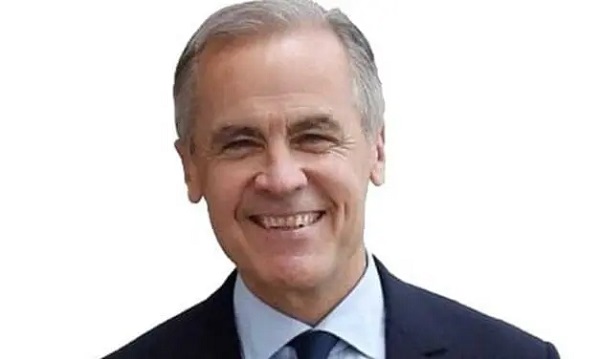
This article supplied by Troy Media.
 By Gwyn Morgan
By Gwyn Morgan
The Carney government’s spending plans will push Canada’s debt higher, balloon the deficit, and drive us straight toward a credit downgrade
Prime Minister Mark Carney was sold to Canadians as the grown-up in the room, the one who’d restore order after Justin Trudeau’s reckless deficits. Instead, he’s spending even more and steering Canada deeper into trouble. His newly unveiled fiscal plan will balloon the deficit, drive up
interest costs and put Canada’s credit rating and economic future in jeopardy.
When Trudeau first ran for office, he promised “modest short-term deficits” of under $10 billion annually and a balanced budget by 2019. Instead, he ran nine consecutive deficits, peaking at $62 billion in 2023–24, and nearly doubled the national debt, from $650 billion to $1.236 trillion. That
reckless spending should have been a warning.
Yet Carney, presented for years as a safe, globally respected economic steward, is proving to be anything but. The recently released Main Estimates (the federal government’s official spending blueprint) project program spending will rise 8.4 per cent in 2025–26 to $488 billion. Add in at least $50 billion to service the national debt, and the federal tab balloons to $538 billion.
Even assuming tax revenues stay flat, we’re looking at a $40-billion deficit. But that’s optimistic. The ongoing tariff war with the United States, now hitting everything from autos to metals to consumer goods, is cutting deep into economic output. That means weaker revenues and a much larger shortfall. Carney’s response? Spend even more.
And the Canadian dollar is already paying the price. Since 2015, the loonie has slipped from 78 cents U.S. to 73. Carney’s spending spree is likely
to drive it even lower, eroding the value of Canadians’ wages, savings and retirement funds. Inflation? Buckle up.
Franco Terrazzano of the Canadian Taxpayers Federation nailed it in a recent Financial Post column: “Mark Carney was right: He’s not like Justin Trudeau, he spends more,” Terrazzano argues. “The government will spend $49 billion on interest this year and the Parliamentary Budget Officer projects interest charges will be blowing a $70-billion hole in the budget by 2029. That means our kids and grandkids will be making payments on Ottawa’s debt for the rest of their lives.”
Meanwhile, Canada’s credit rating is under real threat. An April 29 report by Fitch Ratings warned that “Canada has experienced rapid and steep fiscal deterioration, driven by a sharply weaker economic outlook and increased government spending during the electoral cycle. If the Liberal program is implemented, higher deficits are likely to increase federal, provincial and local debt to above 90 per cent of GDP.”
That’s not just a red flag; it’s a fire alarm. A downgraded credit rating means Ottawa will pay more to borrow, which trickles down to higher interest rates on everything from provincial debt to mortgages and business loans.
But this decline didn’t start with tariffs. The rot runs deeper. One of the clearest signs of a faltering economy is falling business investment per worker. According to the C.D. Howe Institute, investment has been shrinking since 2015. Canadian businesses now invest just 66 cents of new capital for every dollar invested by their OECD counterparts; only 55 cents compared to U.S. firms. That means less productivity, fewer wage gains and stagnating living standards.
Why is investment collapsing? Policy. Regulation. Taxes. Uncertainty.
The C.D. Howe report laid out a straightforward to-do list, one the federal government continues to ignore:
Reform corporate taxes to attract capital investment.
Introduce early-stage investment incentives.
Tear down regulatory barriers delaying resource and infrastructure projects, especially in energy (maybe then Alberta won’t feel like seceding).
Promote IP investment with targeted tax credits.
Bring stability and predictability back to the regulatory process.
Instead, what Canadians get is policy chaos and endless virtue-signalling. That’s no substitute for economic growth. And let’s talk about Carney’s much-touted past. Voters were bombarded with reminders that he led the Bank of Canada during the 2008–09 financial crisis. But it was Jim Flaherty, Stephen Harper’s finance minister, who made the hard fiscal decisions that got the country through it. Carney’s tenure at the Bank of England? A different story. As former U.K. Prime Minister Liz Truss put it: “Mark Carney did a terrible job” at the Bank of England. “He printed money to a huge extent, creating inflation.”
Fast-forward to today, and Canada’s performance is nothing short of dismal. Our GDP per capita sits at just $53,431, compared to America’s $82,769. That’s not just a bragging-rights statistic. It reflects real differences in productivity, competitiveness and national prosperity. Worse, over the past 10 years, Canada’s per capita GDP has grown just 1.1 per cent, second worst in the OECD, ahead of only Luxembourg.
We remain a great country filled with capable people, but our most significant fault may be how easily we fall for image over substance. First with Trudeau’s sunny ways. Now with Carney’s global banker persona. The reality? His plan risks stripping Canadians of their prosperity, downgrading our creditworthiness and deepening long-term decline.
It pains me to say it, but unless something changes fast, Canadians face continued erosion in their standard of living and inflation-driven losses in their savings. The numbers are grim. The direction is wrong. And the consequences are generational.
Trudeau fooled voters with promises of restraint. Carney’s now asking for the same trust, with an even bigger bill attached. Canadians can’t afford to make the same mistake twice.
Gwyn Morgan is a retired business leader who has been a director of five global corporations
-

 Agriculture2 days ago
Agriculture2 days agoCanada’s supply management system is failing consumers
-
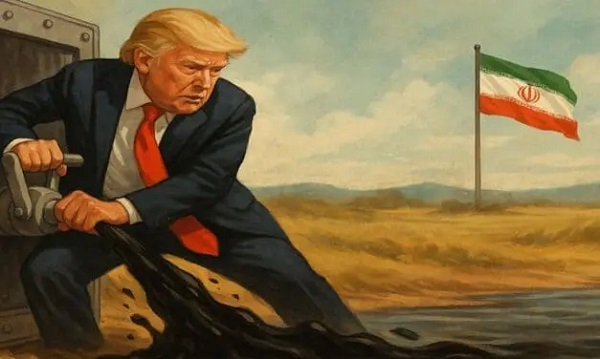
 Economy2 days ago
Economy2 days agoTrump opens door to Iranian oil exports
-
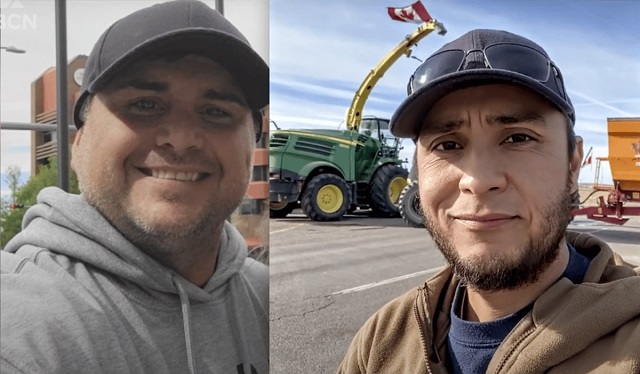
 Alberta1 day ago
Alberta1 day agoCOVID mandates protester in Canada released on bail after over 2 years in jail
-

 Alberta1 day ago
Alberta1 day agoAlberta uncorks new rules for liquor and cannabis
-

 Business24 hours ago
Business24 hours agoCanada’s loyalty to globalism is bleeding our economy dry
-

 armed forces23 hours ago
armed forces23 hours agoCanada’s Military Can’t Be Fixed With Cash Alone
-

 Crime1 day ago
Crime1 day agoProject Sleeping Giant: Inside the Chinese Mercantile Machine Linking Beijing’s Underground Banks and the Sinaloa Cartel
-

 International1 day ago
International1 day agoTrump transportation secretary tells governors to remove ‘rainbow crosswalks’






